Coffee, the most beloved beverage of millions worldwide, has long been a staple of morning routines and afternoon pick-me-ups alike. Though traditional brewing methods have held sway for decades, the lure of instant coffee’s convenience and rapid preparation has made it a popular alternative in recent times. For those who may be scratching their heads and asking themselves, “What exactly is instant coffee, anyway?”, fear not – this article is here to provide a comprehensive guide to all of the associated aspects. Within these paragraphs, we shall delve deep into the annals of instant coffee history, peruse its various types, examine the intricacies of its creation and brewing techniques, and even explore some creative alternative uses for it beyond the mere enjoyment of a standard morning cup of joe.
What is Instant Coffee?

At its core, instant coffee – also known as soluble coffee or coffee powder – is a type of coffee that dissolves quickly in hot water, allowing for a swift and convenient means of enjoying a steaming cup of coffee with minimal fuss. The process by which it is created begins with regular coffee beans, which are brewed traditionally before the water is extracted, leaving behind a fine dusting of coffee crystals or powder. This powder is then subject to either freeze-drying or spray-drying methods; resulting in its familiar granulated appearance as it is commonly known in the English-speaking world. (1)
The Intricacies of Instant Coffee’s Evolution
The convoluted history of instant coffee can be traced back to the tail end of the 18th century. It was then that a British scientist by the name of John Dring crafted the first known instance of instant coffee in 1771. Dring produced a soluble coffee powder by brewing coffee, then evanesced the water using a vacuum pan. Some other claims about this invention include the idea that David Strang of Invercargill was the one who developed it in 1890. (2)
As an outcome, Dring created what he referred to as a “coffee compound.” This new creation was deemed patentable by the British government. Nevertheless, it would take another century before the notion truly caught on.
Fast forward to the American Civil War era, and experimental “cakes” were being distributed to soldiers. It wasn’t until 1853 that the first American instant coffee product was created. (3)
The Innovator, George Constant Louis Washington
Nonetheless, it was not until the dawn of the 20th century that instant coffee became commercially feasible. In 1901, Satori Kato, a Japanese-American chemist, invented a novel approach to its production process. This novel method entailed drying brewed coffee with a high-pressure hot air system. (4)
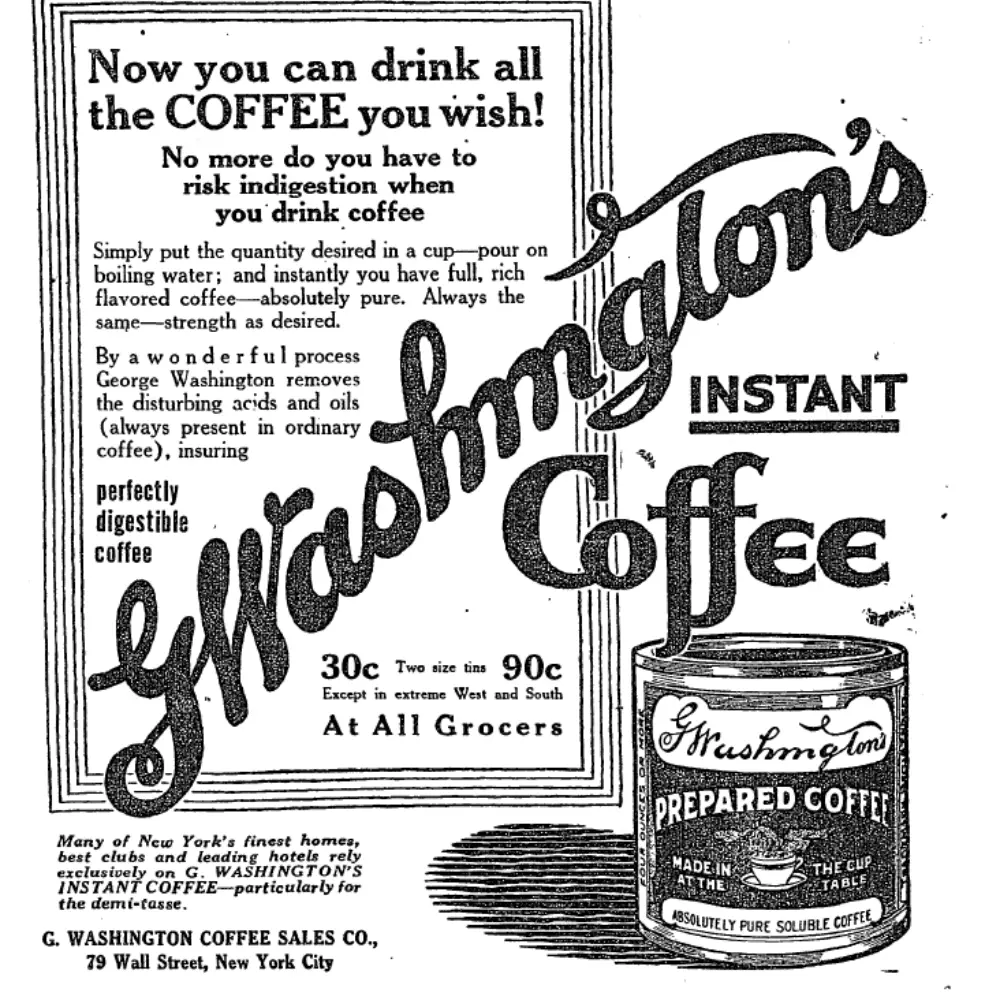
This technique was later improved upon in 1906 by George Constant Washington, an American inventor who devised a more efficient method of making instant coffee using a freeze-drying process. This new process, while considered rather unsatisfactory in taste, was marketed as “Red E Coffee.”(5)
When World War I erupted, instant coffee’s popularity skyrocketed, particularly among the U.S. military, who affectionately referred to it as a “cup of George.” Upon returning home, the soldiers’ cravings for the product endured.
Nestle’s Groundbreaking Nescafe
In the 1930s, the Brazilian Coffee Institute commissioned Nestle to create a flavorful soluble coffee product to address Brazil’s abundant coffee surplus. After years of intensive research, Nestle scientist Max Morgenthaler created a new instant coffee-making method in 1937. The fresh product was christened Nescafe, which is a portmanteau of Nestle and cafe.
In 1938, Nestle launched Nescafe in Switzerland, and the product rapidly gained popularity. During World War II, this particular type of coffee was ubiquitous among soldiers, and Nescafe became a leading supplier. In 1964, Nestle refined its Nescafe product to preserve a more delicate aroma.
Advances in Instant Coffee
In the 1960s, a more aesthetically appealing instant coffee was created using a process known as agglomeration. This process involved steaming the beverage particles to bind them together in clumps. However, the second heating/drying cycle inflicted further harm on the coffee’s flavor.
In the 1960s, freeze-drying became the preferred method of producing instant coffee. In 1965, Nestle launched a freeze-dried coffee called Gold Blend, boasting of its novel, smoother, richer flavor. The product was swiftly followed by ultra-premium freeze-dried coffee. (6)
Furthermore, Nestle introduced two unique instant coffee offerings: Cap Columbia, a mild after-dinner coffee made from Colombian coffee beans, and Alta Rica, a full-bodied coffee produced from top-grade Latin American coffee beans.
The story of this delectable liquid is one of continual innovation and improvement. From the initial “coffee compound” patent in 1771 to today’s high-quality instant coffee products, the industry has undergone a significant transformation.
| Preview | Product | |
|---|---|---|

|
Nescafe Gold 200 gr. 7 Oz, Whole Bean | See on Amazon |

|
Nescafe Gold Blend | 95g | Pack of 3| | See on Amazon |
What is Instant Coffee Made of?
When contemplating the makeup of instant coffee, one must first understand the process behind its creation. In essence, it is derived from regular coffee beans that undergo a rigorous procedure aimed at producing a concentrated coffee extract. The resulting extract is subsequently dried; resulting in the production of either a powder or crystals that can be rehydrated to make a cup of coffee.
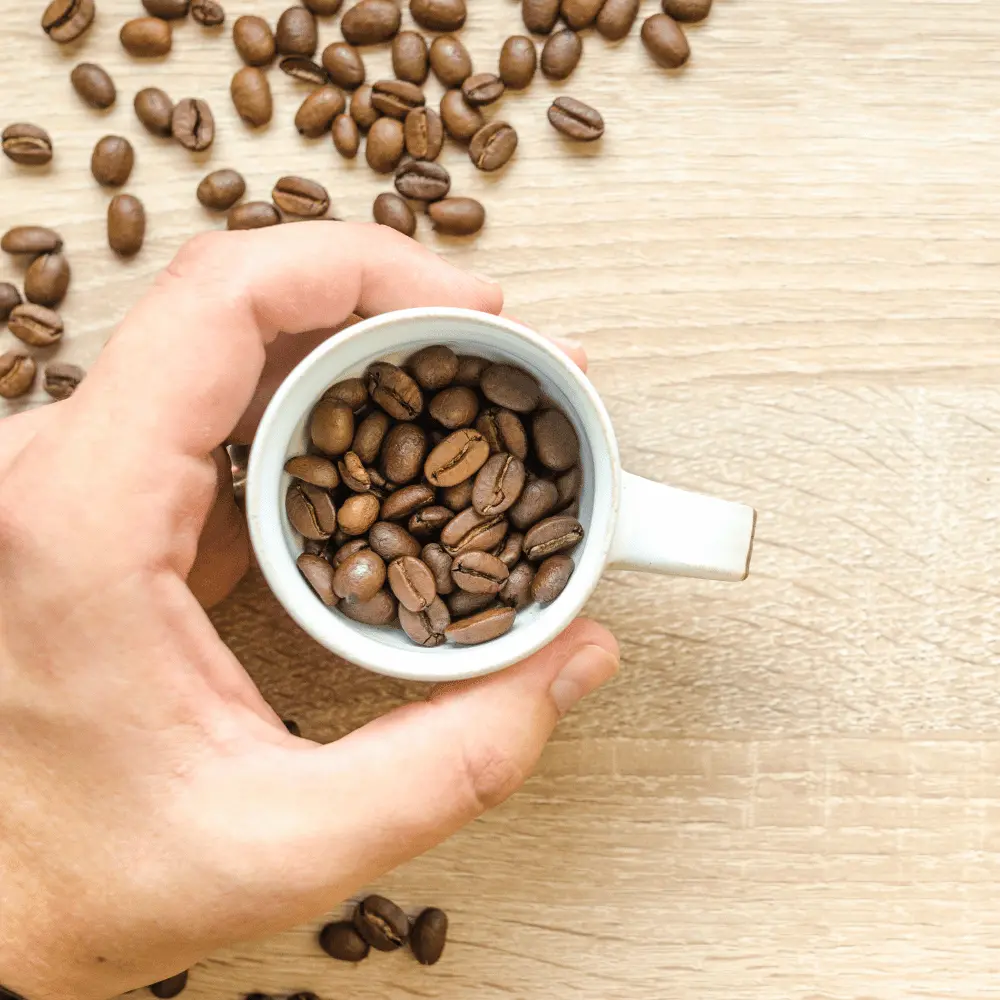
The Characteristics of Soluble Coffee Powder
Soluble coffee powder is the type of instant coffee that is most well-known. This particular type of coffee is made by first brewing coffee beans, then using hot water to extract the taste and fragrance. The water used for extraction is then removed using a freeze-drying or spray-drying procedure; resulting in a powdered, highly concentrated coffee extract. When combined with hot water, this powder dissolves rapidly; producing a quick and simple cup of coffee.
One of the advantages of soluble coffee powder is its extended shelf life. The drying process eliminates any moisture within the coffee extract, thereby preventing the growth of mold and bacteria that could otherwise spoil the coffee. This characteristic renders instant coffee storable for a prolonged period without any loss of flavor.
Freeze-Dried Coffee Crystals
Another type of instant coffee known as freeze-dried coffee crystals is produced via a different drying process. In this instance, brewed coffee is frozen into slabs, after which it is fragmented into smaller pieces that are then deposited into a vacuum chamber. The chamber is then heated, causing the ice within the coffee to undergo sublimation, i.e., turn into vapor without ever becoming liquid. The vapor generated is captured and then condensed; resulting in the creation of a dry coffee concentrate.
Although freeze-drying is a more expensive and time-consuming process compared to spray-drying, the final product produced exhibits a more authentic coffee flavor with higher quality. This result is attributed to the coffee’s frozen state, which preserves the flavor compounds in the coffee, leading to a richer, more aromatic cup of coffee.
Instant Coffee Types
Two primary types of instant coffee exist: spray-dried and freeze-dried. Although both types undergo similar processing procedures, their flavors, aromas, and textures differ considerably.
Spray-Dried Instant Coffee
Spray-dried instant coffee is one of the most widely recognized forms. This type is produced by brewing coffee beans and subsequently spraying the resulting coffee extract into a heated chamber. The heat source evaporates the water in the extract, leaving behind coffee crystals that are then ground into a fine powder.
The Spray-dried method is appreciated for its mild flavor and smooth texture. The coffee crystals dissolve quickly in hot water, and it is commonly used in commercial coffee blends, often found in hotel rooms and vending machines.
One of the primary benefits of spray drying is its affordability. The spray-drying process is less expensive than freeze-drying; making it the more cost-effective option for producing significant amounts.
Freeze-Dried Instant Coffee
Freeze-dried instant coffee is known for its rich, authentic coffee flavor, akin to that of freshly brewed coffee. Additionally, it has a longer shelf life than the spray-dried one and is commonly used by backpackers and campers as a lightweight and convenient alternative to regular coffee. However, due to the added freeze-drying step, it is generally considered the most expensive.
Coffee powder is a popular and convenient alternative to regular coffee. While there are different types of instant coffee, the two main categories are spray-dried and freeze-dried. Although both types are created using a similar process, they differ significantly in their flavor, aroma, texture, and cost. The choice of type ultimately depends on personal preferences, budget, and other individual factors.
Does Instant Coffee Have Caffeine?
It is not uncommon for individuals who hold an affinity for coffee to contemplate the presence of caffeine in instant coffee, and with just cause. Allow me to alleviate the suspense – yes, this beverage does contain caffeine. Caffeine is a naturally occurring chemical compound that is present within coffee beans, and as such, it also exists in instant coffee. The exact quantity of caffeine is dependent on a variety of factors, such as the brand and size of the serving, but on average, one cup will possess between 30-90 mg of caffeine.

It is pertinent to mention that the caffeine concentration found in instant coffee is less than that of traditionally brewed coffee, which generally has approximately 95 mg of caffeine per cup. Nevertheless, the precise caffeine content is influenced by the type and intensity of the coffee being prepared. Furthermore, certain instant coffee brands offer decaffeinated options for those who desire to constrain their caffeine consumption.
In conclusion, for individuals who appreciate coffee and require an expedient and straightforward means of obtaining a caffeine boost, instant coffee serves as an excellent option. However, it is imperative to verify the label to gain awareness of the caffeine content and indulge in your cup of “joe” without concern.
The Elusive Art of Crafting Instant Coffee

The practice of instant coffee-making, often associated with quick gratification and convenience, requires some degree of precision to achieve optimal results. Regardless of whether you are an amateur in the field or simply seeking to refine your skills, this article provides a detailed guide on how to produce a perfect cup of coffee.
The Recipe for Crafting Instant Coffee
Producing instant coffee is a process that can be accomplished with relative ease in a few steps. The key lies in utilizing the appropriate amount to obtain the desired level of strength and flavor.
The Breakdown of Crafting Instant Coffee
Boiling water: The process commences with heating the water to a temperature between 195-205°F (90-96°C). This is considered the optimal temperature range for coffee brewing and helps to accentuate the flavor and aroma of the coffee.
Measuring the instant coffee: The recommended amount is one or two teaspoons per cup of water. Once measured, add it to a mug.
Adding hot water: Pour the heated water over the instant coffee and stir until the coffee granules are entirely dissolved.
Incorporating milk and sugar (optional): If preferred, add milk and sugar to achieve the desired taste. Other ingredients, such as cream or flavored syrups, may also be incorporated to create a customized cup of coffee.
Factors to Consider
When crafting instant coffee, certain aspects should be considered to ensure the most favorable taste and quality.
Water temperature: As previously mentioned, water temperature plays a pivotal role in the brewing process. Thus, it is imperative to utilize water between 195-205°F (90-96°C) to achieve optimal outcomes.
Coffee-to-water ratio: The quantity of instant coffee employed may impact the coffee’s strength and flavor. Typically, it is recommended to utilize one to two teaspoons per cup of water. However, one can adjust the quantity based on personal preference.
Stirring: To ensure that the instant coffee granules have been completely dissolved, it is crucial to stir the mixture well.
By following these uncomplicated steps and adhering to the guidelines mentioned above, one can produce a delightful cup of instant coffee, one that can even rival that of the best brewed coffee.
How to Make Instant Coffee Taste Better
For aficionados of instant coffee who discern a flavor void, fear not. There exists a plethora of uncomplicated strategies to amplify the taste of your cup of joe and concoct a more gratifying cup.
Pointers for Elevating Instant Coffee Taste
Opt for Hot Milk instead of Water: Eschew utilizing hot water to concoct your coffee and instead endeavor to use hot milk. This will impart a creamier texture and a more luscious flavor to your coffee.
Add a Modicum of Salt: Introducing a minuscule pinch of salt can ameliorate the bitterness and heighten the overall flavor. Exercise caution not to incorporate an exorbitant amount of salt; since it may quickly overpower the taste of the coffee.
Experiment with Spices: The inclusion of spices such as cinnamon, nutmeg, and cardamom can augment the profundity and complexity of your coffee. Attempt infusing a dash of your preferred spices into your coffee for a unique and flavorful twist.
Incorporate Flavored Syrups: Flavored syrups such as vanilla, caramel, and hazelnut can add sweetness and flavor. A meager quantity of flavored syrup can transform an ordinary cup of coffee into a sumptuous treat.
Instant Coffee Recipes to Try
Iced Coffee: Brew a cup of coffee, supplement ice and milk or cream to taste, and agitate in a sweetener such as honey or agave nectar for a refreshing iced coffee.
Mocha Latte: Brew a cup of instant java and stir in a tablespoon of cocoa powder and a sweetener of your choice. Heat some milk on the stove or in the microwave, and pour it over the coffee mixture for a luscious mocha latte.
Coffee Smoothie: Purée a cup of instant coffee with frozen fruit, yogurt, and milk for a healthful and refreshing coffee smoothie.
By heeding these guidelines and sampling the recommended coffee combinations, you can effortlessly amplify the taste and flavor of your liquid refreshment and concoct a personalized cup that meets your preferences.
Instant Coffee vs Brewed Coffee

For those who consider themselves aficionados of the dark, robust, and addictive beverage known as coffee, a fierce debate has long raged about the merits of instant coffee versus traditionally brewed coffee. While each type of coffee has its share of proponents and detractors, the nuances between the two are worth exploring in greater depth.
Examining the Distinctions between Instant Coffee and Brewed Coffee
The Complexities of Taste
Undoubtedly, one of the most striking differences between instant coffee and brewed coffee is the taste. Instant coffee, due to its processing methods, typically presents with a milder, more subdued flavor profile than that of its brewed counterpart. This underwhelming flavor profile may explain why this type of coffee is sometimes considered a poor substitute for the more robust traditional coffee.
Brewed coffee, on the other hand, is renowned for its bold and complex flavor, exhibiting a wider range of taste notes and aromas. This superiority in flavor profile can be attributed to the steeping of freshly ground coffee beans in hot water, which allows the natural oils and flavors of the coffee to be expertly extracted.
The Battle of Convenience
One of the main selling points of instant coffee is its sheer convenience. Thanks to its quick-dissolving properties, it is a speedy and hassle-free way to enjoy a caffeine boost on the go or in a hurry. Brewed coffee, on the other hand, demands more time and a more substantial arsenal of equipment to prepare. You’ll need a coffee maker or a French press, as well as freshly ground coffee beans and hot water; making it a more involved and potentially time-consuming process, particularly if you’re in a hurry or lack access to the necessary equipment.
The Health Factor
While both types of coffee can be enjoyed for their respective health benefits, they are not created equal in terms of their nutritional value. Instant coffee, due to the processing and preservatives employed in its production, is typically viewed as the less healthy option. Nevertheless, some studies suggest that it may have a higher antioxidant content than its brewed counterpart, potentially providing some health benefits.
Brewed coffee also boasts its own set of health benefits, including a reduced risk of various illnesses, such as diabetes, liver disease, and Parkinson’s disease. However, these advantages may be offset by the addition of cream, sugar, or other sweeteners, which can introduce unwelcome calories and unhealthy additives into the brew.
The Ongoing Debate: Instant Coffee or Brewed Coffee?
When confronted with the age-old debate of instant coffee versus brewed coffee, the answer is not always cut-and-dry. While both types of coffee possess their benefits and drawbacks, the ultimate decision lies in personal preferences and unique needs.
The Upsides and Downsides of Instant Coffee
Pros
Convenience reigns supreme: The quick and effortless preparation of instant coffee makes it a go-to option for individuals pressed for time or constantly on the move.
Extended shelf life: Instant coffee can be stored for much longer than regular coffee without experiencing a loss of flavor or freshness, rendering it a more practical choice for those who infrequently consume coffee.
Affordability: In comparison to brewed coffee, instant coffee is generally less expensive, making it an economical option for those attempting to pinch pennies.
Cons
Lower quality: The added processing and preservatives used in the creation of instant coffee often result in it being deemed of lower quality than brewed coffee.
Milder flavor profile: Instant coffee frequently possesses a less complex and milder flavor profile than brewed coffee, which may not be ideal for coffee enthusiasts.
Health concerns: Instant coffee frequently contains unhealthy additives, such as sugar, creamer, or other sweeteners, which add calories and detrimental ingredients to the coffee.
The Benefits and Drawbacks of Brewed Coffee
Pros
Flavorful and bold: Renowned for its bold and rich flavor, brewed coffee presents a broader spectrum of taste notes and aromas than instant coffee.
Healthy aspects: Consuming brewed coffee has been linked to a range of health benefits, such as a decreased risk of certain diseases, such as diabetes, liver disease, and Parkinson’s disease.
Customizable: Brewed coffee allows for personalization to suit individual preferences, with an array of brewing methods and equipment available to create a customized cup of coffee.
Cons
Time-intensive: Preparing brewed coffee necessitates more time and equipment, which can be inconvenient for individuals short on time or lacking the requisite equipment.
Perishable: Brewed coffee is perishable and can rapidly lose its freshness and flavor if not consumed within a few hours of brewing.
Costly: In comparison to instant coffee, brewed coffee can be more expensive, especially if you opt for premium beans or equipment.
The decision between instant and brewed coffee rests upon personal preferences and unique needs. While this soluble coffee may be more convenient and budget-friendly, brewed coffee generally provides a more flavorful taste and more health benefits. Whether you prefer the rapid and easy convenience or the rich and intricate flavor, both options can deliver a satisfying cup of coffee for various occasions.
The Multifarious Applications of Instant Coffee
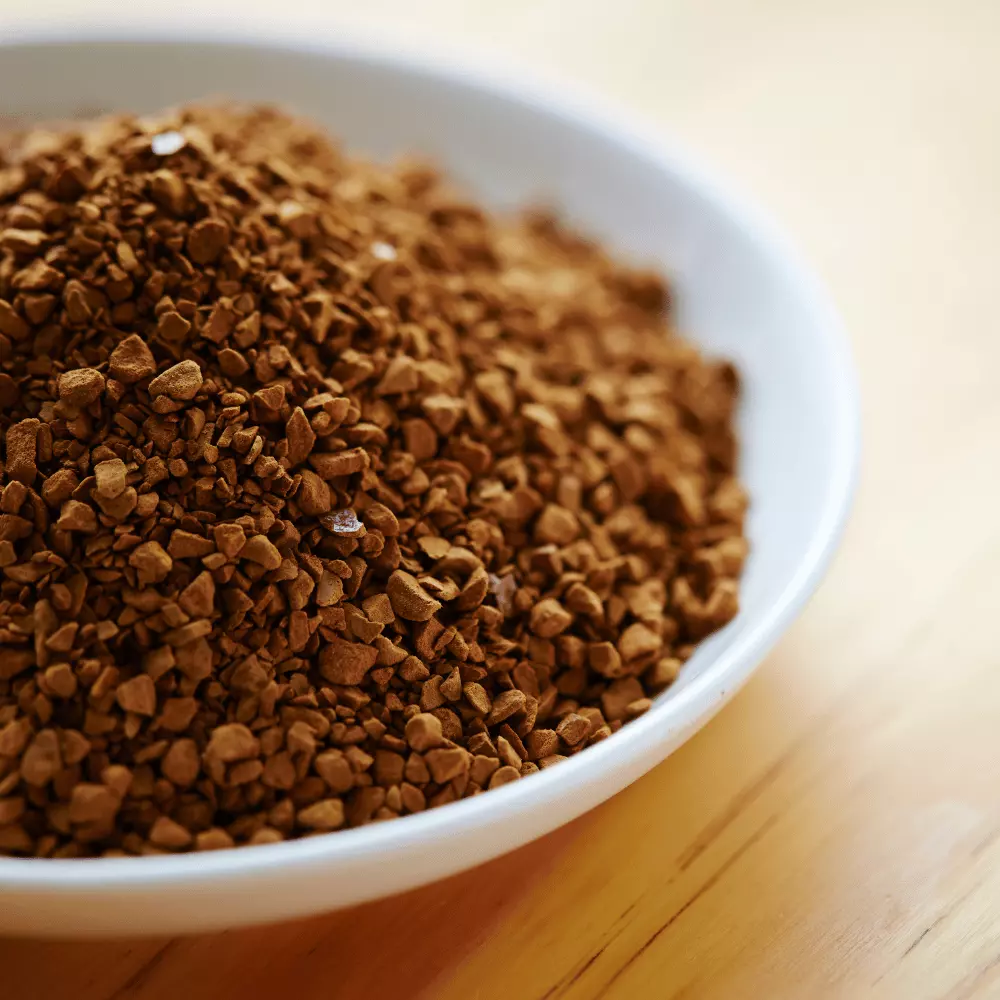
In addition to its quintessential purpose of expediting the process of brewing coffee, instant coffee has myriad uses. Among them is its use in the realm of baking, where it can augment the complexity and intensity of flavors in various desserts and baked goods.
Utilizing Instant Coffee for Baking: A Feasible Option?
Indeed, instant coffee can be used for baking. The facile dissolvability of this beverage in liquids permits it to be directly incorporated into cake batters, cookie dough, or frosting to heighten the flavor and fragrance of the baked goods.
Pointers for Employing Instant Coffee in Baking
Optimal Quantity: Precision in the amount employed is crucial to the achievement of the desired flavor. Initiate with a nominal quantity, such as a teaspoon, and gradually escalate the amount until the intended flavor is attained.
Dissolving in Hot Water: To avert agglomerating and ensure uniform dispersion of the coffee flavor, dissolving the instant coffee in hot water before integrating it into the batter or dough is advised.
Exploring Different Types: Experimentation with various types can unearth the most suitable option for the recipe (spray-drying/freeze-drying).
Recipes Incorporating Instant Coffee
Coffee Brownies: Enrich your preferred brownie recipe with a teaspoon of instant coffee for a delectable and luscious coffee flavor.
Coffee Cake: Double the coffee flavor in this quintessential dessert by incorporating coffee in both the batter and frosting.
Mocha Cookies: Intensify the richness and decadence of your preferred cookie dough recipe by adding instant coffee and cocoa powder for a sublime mocha flavor.
Incorporating coffee into your baking can endow your favorite desserts and baked goods with an exceptional and palatable coffee flavor. Just keep in mind the importance of using the appropriate amount and dissolving it in hot water for even dispersion of the coffee flavor.
The Myriad of Ingenious Applications for Instant Coffee
The customary and expedient use of instant coffee is to create a quick cup of coffee. However, there exists an extensive range of alternative and resourceful applications for this versatile product. Presented below are some unusual and unexpected ways to incorporate these coffee crystals into your daily life.
DIY Skincare Recipes
Instant coffee, being an excellent exfoliating agent, can be used as a primary ingredient in DIY skincare recipes to brighten and rejuvenate your skin. To that end, some uncomplicated recipes to experiment with are as follows:
Coffee Scrub: A gentle exfoliating coffee scrub can be created by mixing 1/2 cup of coffee grounds, 1/4 cup of coconut oil, and 1/4 cup of sugar. Gently massage the concoction in a circular motion onto your skin and rinse it off with warm water.
Eye Mask: Brew a cup of java and allow it to cool. Soak cotton pads in the coffee and place them over your eyes for 10-15 minutes to mitigate puffiness and dark circles.
Face Mask: To create a hydrating and exfoliating face mask, mix 2 tablespoons of coffee with 2 tablespoons of cocoa powder, 1 tablespoon of honey, and 1 tablespoon of plain yogurt. Apply the mixture to your face and let it sit for 15-20 minutes before rinsing it off with warm water.
Natural Dyeing Techniques
The capacity of instant coffee to serve as a natural dye for fabrics and paper is relatively unknown. Listed below are a few techniques to explore:
Paper Staining: Start by brewing a robust cup of coffee and allowing it to cool. Then, immerse the paper into the coffee and let it soak for a few minutes. Afterward, take out the paper and let it dry to achieve an aged, vintage look.
Fabric Dyeing: Combine a few tablespoons of instant coffee with hot water and submerge the fabric in the mixture. Allow the fabric to soak for several hours or overnight, then rinse it with cold water and let it dry.
Wood Staining: Brew a robust cup of coffee and allow it to cool. Use a brush to apply the coffee to unfinished or light-colored wood, then let it dry. Repeat the process until the desired color is achieved.
By incorporating powdered coffee in these innovative and unexpected ways, you can add a distinctive and fascinating element to your DIY projects and skincare routines.
Conclusion
As we draw to a close, it is worth mentioning that instant coffee represents an expedient and user-friendly substitute for traditional coffee brewing methodologies. It is procurable in an extensive spectrum of variations and flavors; ensuring that there is something for everyone, irrespective of their proclivities or predilections. The quintessential ingredient in making an excellent cup is the careful selection of the appropriate variant of coffee, coupled with adherence to the recommended brewing guidelines and the mindful consideration of factors such as water temperature and cup dimensions. Armed with the tips and techniques furnished in this discourse, you can now embark on the confident preparation and relishing of a delectable cup of soluble coffee in the intimate and amenable confines of your home or office. So, why not avail yourself of this opportunity and discover the ease and adaptability of instant coffee firsthand?
FAQS
What Are the Different Types of Instant Coffee?
Spray-dried and freeze-dried are the two principal types of instant coffee. The process of spray-drying involves spraying a fine mist of coffee extract into hot air. This quickly dries and dehydrates the extract. On the other hand, freeze-drying is manufactured by freezing the coffee extract and then employing a vacuum to remove the water through sublimation. This process leaves behind dry coffee crystals.
How Can I Make Instant Coffee Taste Better?
Enhancing the flavor of instant coffee can be achieved through multiple means. Adding a pinch of salt or cinnamon can work wonders to heighten the taste. You can also use hot milk instead of water to obtain a creamier texture or add a small amount of vanilla extract or almond extract to create a unique flavor profile. Experimentation with different brands and kinds can lead you to the one that suits your taste preferences.
Is Instant Coffee Better Than Brewed Coffee?
Choosing between instant coffee and brewed coffee depends on one's personal preferences and requirements. Instant coffee is the more convenient option with a longer shelf life, while brewed coffee is usually perceived to have a richer flavor and more health benefits. Both types of coffee can provide a satisfying cup of coffee for different occasions.
Is Instant Coffee Bad for You?
Compared to brewed coffee, instant coffee has reduced caffeine levels but higher antioxidants, which may have health benefits. However, excessive consumption of this kind of drink may lead to potential health issues such as heart palpitations and insomnia.
How Much Caffeine Is in Instant Coffee?
The amount of caffeine in instant coffee can vary depending on factors such as the brand, brewing method, and serving size. Generally, it contains less caffeine than brewed coffee. A teaspoon of instant coffee contains approximately 30-90 mg of caffeine, while a cup of brewed coffee has around 70-140 mg of caffeine.
Can I Use Instant Coffee for Baking?
Instant coffee can be used in baking to impart a coffee flavor and aroma to baked goods. It can be added directly to cake batters, cookie dough, or frosting to enhance the taste. In addition, it can be utilized to make coffee-infused desserts and treats, such as coffee brownies, coffee cakes, or mocha cookies.
Does Instant Coffee Go Bad?
The shelf life of instant coffee can vary depending on its different types and storage conditions. Generally, it can last up to two years if unopened, and up to six months if opened and stored in a dry and airtight container. After this period, the quality and taste may deteriorate.





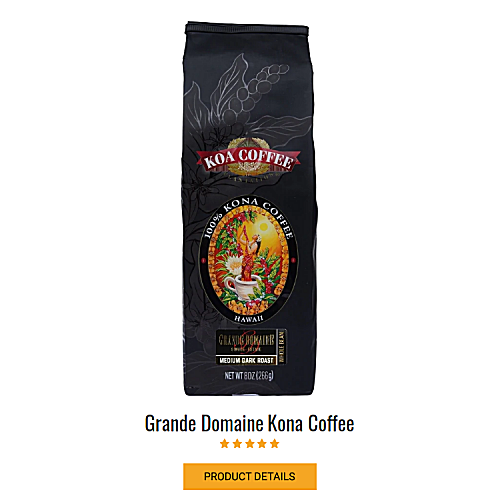

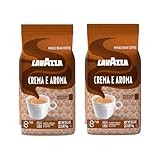


















2 comments